

Te Whakaruruhau
Waikato Women's Refuge
GoodMeasure Results
March 2025
Te Whakaruruhau, Waikato Women's Refuge, is a social change agency dedicated to providing continuous support, empowering wāhine, and ensuring the safety and resilience of their tamariki.
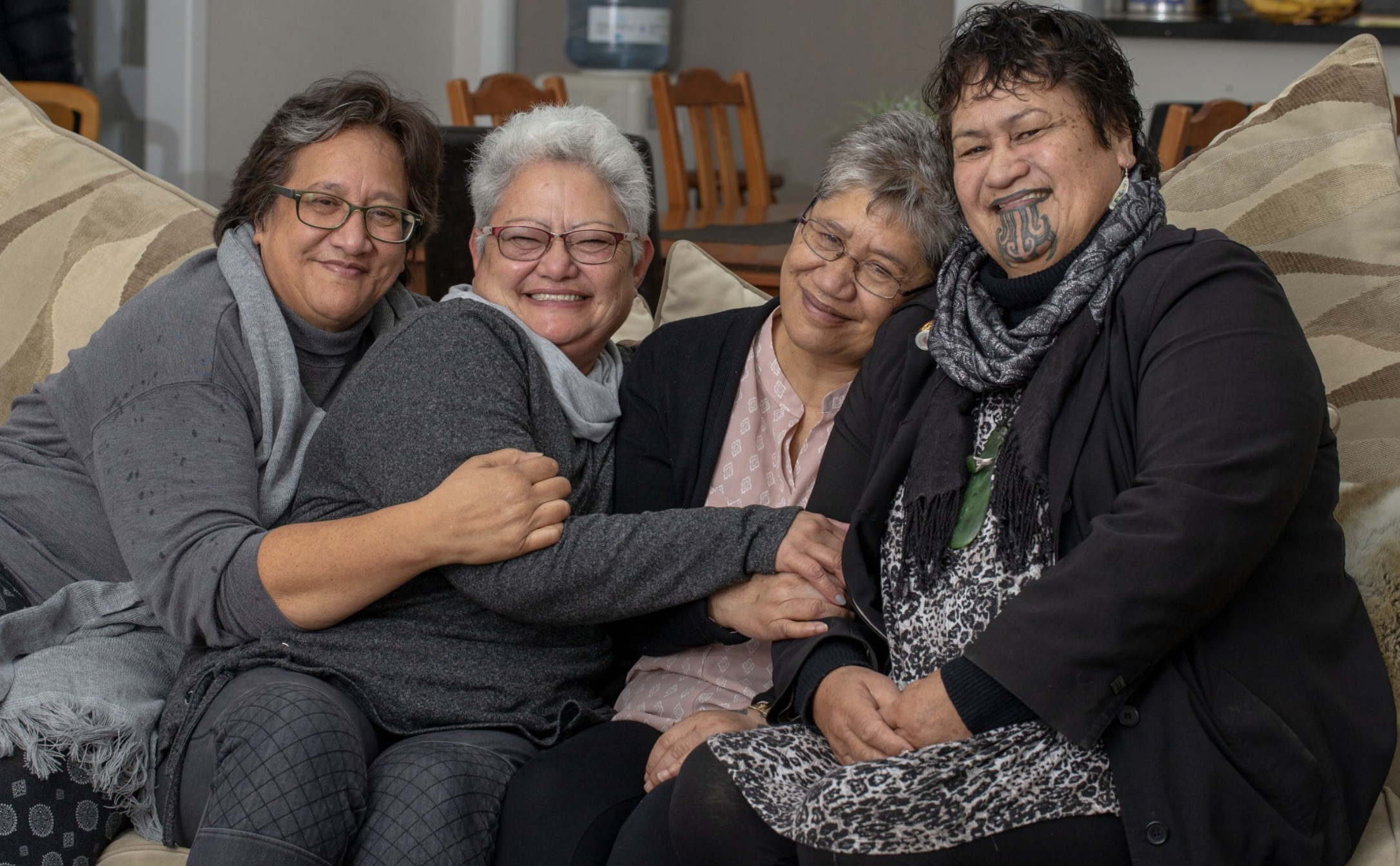
Image 1: Members of WWRT team.

Scope - Te Whakaruruhau
This GoodMeasure considers the social value created for participants who engaged in Te Whakaruruhau's services, during the period 1 November 2023 - 31 October 2024.
Te Whakaruruhau operates a 24/7 crisis service, addressing immediate needs and safety concerns. Kaimahi advocates make initial contact, assess the situation, and create a personalised safety plan. Wahine, tamariki, whānau, and sometimes tāne receive full wraparound support through community-based or residential services.
Entry Process: Referrals come from government agencies (OT, Police, Corrections, Hospitals, WINZ) and the community (whānau or self-referral). Advocates make initial contact, often via a cold call to the home, with a response time of 30–40 minutes. The severity of the case determines the next steps.
Needs Assessment: Each wahine is assigned a core kaimahi advocate. They discuss needs, risks, and create a safety plan. The assessment considers risks posed by others (e.g., gang affiliations, drug use, violent history) and the wahine’s own circumstances. This phase is crucial for building trust.
Safety Plan: Each safety plan is tailored to the wahine’s needs. It may involve safe housing, family safety alarms, relocation, or temporary motel stays. Safe housing can take longer to secure, so short-term solutions are available.
Goal Setting: Advocates help wahine set realistic goals, prioritising immediate safety, followed by medium- and long-term objectives.
Wraparound Support Services Provided:
- Residential Support – Safe housing and care for wahine and their children.
- Legal Assistance – Help with legal status, court support, asset redistribution, and justice processes.
- Health & Wellbeing – Medical, dental, injury care, trauma rehabilitation, and counselling for women and children.
- Child Advocacy – Support with schools and other services.
- Financial & Practical Support – Food parcels, transport, education, training, and work assistance.
Accessibility
Te Whakaruruhau offers ongoing advocacy with an open-door policy, allowing wahine and their whānau to return when needed.
The following are excluded from this GoodMeasure report:
- Transitional Housing.
- Specialist services, such as Trauma Counselling and Child Advocacy were treated as referrals, i.e. the costs of these in-house services were not included in this GoodMeasure.
- Te Whakarurhau general advocacy work in the North Island.

How ImpactLab defines social value
Social value is the estimated social impact in dollar terms that a programme achieves for participants over their lifetime.
Throughout our lives, different events occur that impact our overall wellbeing journey. ImpactLab measures the impact on an individual’s wellbeing across multiple domains when they’re supported by a programme to make positive changes in their life.
We measure this impact in terms of both positive benefits (such as increased income) and avoided costs to government.
To calculate social value, we combine these impact values with:
- evidence from global literature about how effective a programme can be;
- the size of the opportunity for the people a programme serves to achieve more positive outcomes; and
- the number of people supported.
By combining these inputs, the social value calculation helps us understand how a programme or intervention helps change lives for the better. We combine the social value with cost information to calculate a programme’s social return on investment.

Image 2: Impact Lab Social Value visual showing the life trajectory of an individual or family before and after an effective programme intervention. While the upward trajectory is depicted as linear, well-being naturally fluctuates over time. However, the overall trend is generally positive
The four key components to measure social value
1. Outcomes
What positive long-term changes do the services help to create in participants' lives?
ImpactLab uses programme data and evidence from academic literature to substantiate what long-term outcomes a service creates. These outcomes are then matched to ImpactLab’s library of GoodMeasure outcomes (outcomes with a dollar value, derived from public data).
2. Effectiveness
What academic evidence is there about how effective service(s) like these can be at achieving those changes?
ImpactLab estimates the effectiveness of your service's activities and delivery approach in achieving each outcome, based on features of effective practice evidenced in similar services, in the academic literature.
3. Population
How many people does Te Whakaruruhau reach, and how many engage long enough to meaningfully benefit?
4. Opportunity
Who does Te Whakaruruhau serve, and what is the opportunity to make a difference for those people?
The opportunity input seeks to reflect the proportion of participants who have the opportunity to achieve a particular outcome (at X effectiveness) as a result of engaging in the programme.

Social Value
/ Cost = Social Return on Investment (SROI)
Social value metrics:
Te Whakaruruhau

$ 19,241,807
Total social value
Social value: The estimated lifetime social value that this service generates for the cohort of participants supported during the measurement period.
$ 6,483
Social value per person
Social value per person: When we divide your social value through the number of people engaging, we can derive a social value per person.
$1 : $6.70
SROI (Social Return on Investment)
SROI: The measurable social value as a proportion of programme costs. This is calculated from dividing the total social value by the programme costs (and rounding to the nearest 10 cents).
Comparison: Te Whakaruruhau's total social value is significantly higher than that of comparable organisations due to the large number of whānau its services reach. The SROI is in line with other family violence intervention programmes that offer a suite of wraparound services.
SROI: The SROI is strong and a high measurable social value return compared to most programmes that ImpactLab has measured.
Population
Who do you serve, how many people do you reach,
and how many engage enough to meaningfully benefit?
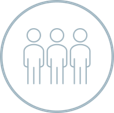
Participant groups | Total starting | Total minimally engaging | Total meaningfully engaging | Meaningful engagement rate |
Wahine | 2953 | 2586 | 1273 | 43% |
Tamariki & pēpē | 2866 | 2551 | 1632 | 57% |
Tāne | 119 | 109 | 63 | 53% |
Households | 2966 | 2599 | 1299 | 44% |
Total participants | 5938 | 5245 | 2968 | 50% |
Starting definition: Wahine, tamariki and/or tāne were referred into the crisis team during the period in scope (1 Oct 2023 - 30 Sep 2024).
Minimally engaged definition: Wahine, tamariki and/or tāne participated in initial contact from the WWRT crisis team.
Meaningful engaged definition: Wahine, tamariki and/or tāne have an initial meeting the home, needs-assessment made and the safety plan is created & implemented.
Note: Social value is measured per meaningfully engaged participant, while costs are calculated per starting participant. Although initial contact meets the minimal engagement definition for WWRT, ImpactLab found it too limited to attribute long-term outcomes to participant groups. In other programmes, this level of engagement would typically be considered the starting point.
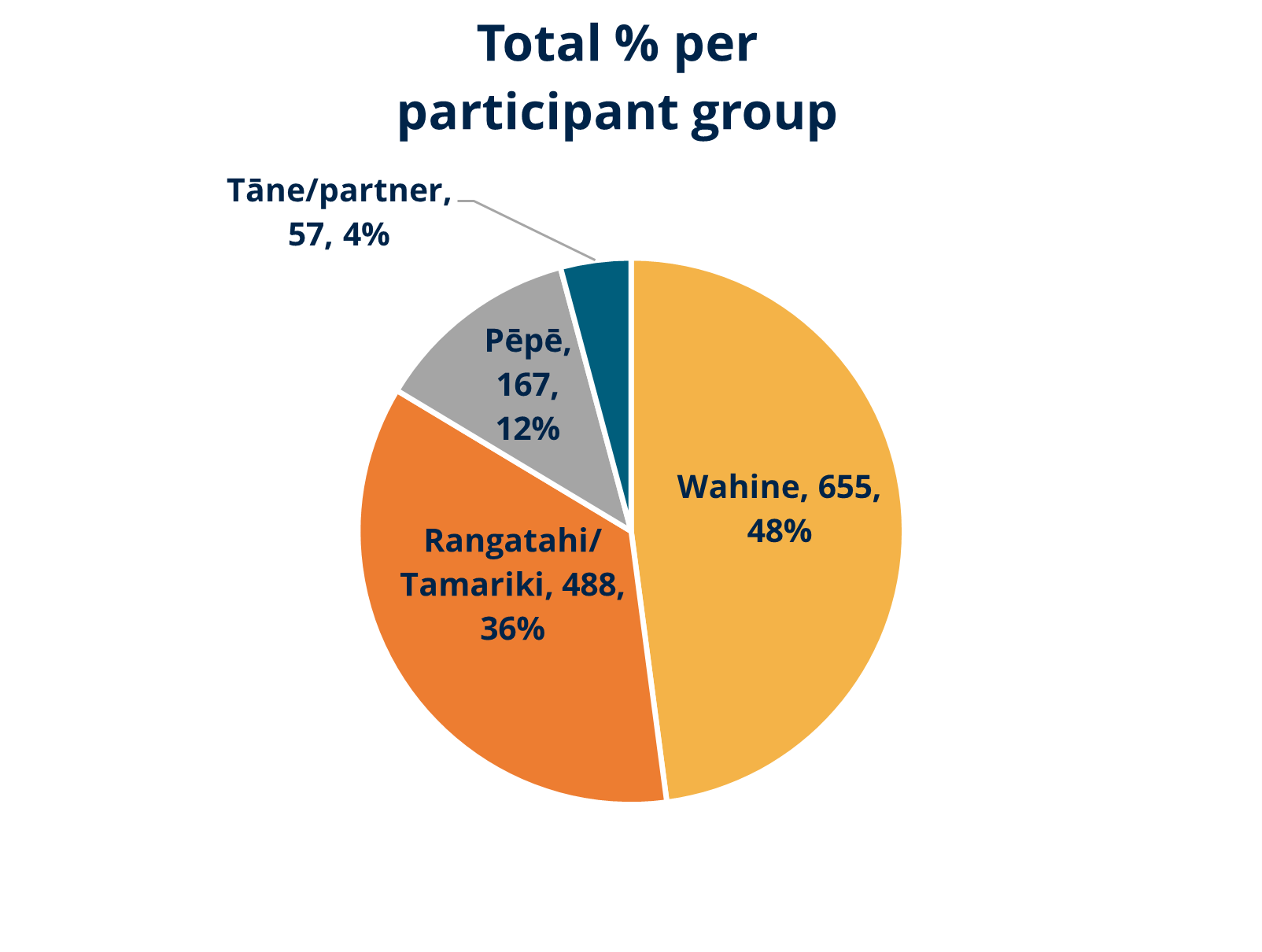
Inputs
- Due to the scale of referrals in the period in scope and that all data was captured in case notes, we decided to take a random sample of 23%.
- We have made the assumption that all the data that includes; demographic, risk factors, services received and engagement would be similar across all wahine, tamariki and tāne/partners across the period in scope.
Insights
- Te Whakaruruhau had 5938 unique referrals of wahine, tamariki and/or tāne/partners between 1 November 2023 - 31 October 2024.
- 167 (12%) and 488 (36%) of referrals through wahine were pēpē and rangatahi/tamariki respectively.
- After referral, 50% of wahine, tamariki and/or tāne/partners have an initial meeting in the home, needs-assessment made and a safety plan created & implemented.
Demographics

Most whānau are of Māori descent:
62% of wahine, 72% of tamariki/pēpē and 70% of tāne/partners.
Outcomes
What positive, long-term changes in peoples’ lives does this service help to create?
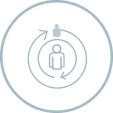
Wahine | Tamariki | Tāne/partner | Household | |
Improve mental health | Improve mental health | Improve mental health | Reduce family violence | |
Improve physical health | Improve physical health | Improve physical health | Reduce victimisation (family violence) | |
Reduce addiction | Reduce addiction | Reduce addiction | Reduce child placement | |
Reduce offending | Reduce offending | Reduce offending | Improve housing | |
Reduce risky behaviour | Reduce risky behaviour | Reduce risky behaviour | ||
Increase employment | Increase academic achievement (NCEA L3) | Increase employment | ||
Improve oral health | Improve infant safety | |||
Reduce emergency benefit |
Improve housing: measures costs savings associated with increased housing quality
Improve infant safety: measures hospital costs associated with infant safety
Improve mental health: intrinsic measurement of an improvement in mental health
Improve oral health: measures health costs associated with the treatment of dental disease
Improve physical health: intrinsic measurement of an improvement in physical health
Increase academic achievement: measures increased income and government savings associated with different levels of academic achievement
Increase employment: measures income and government savings assocaited with moving into employment
Reduce addiction: measures government costs associated with addiction
Reduce emergency benefit: measures increased income and government costs associated with emergency benefit payments
Refuce family violence: measures government costs associated with family violence
Reduce victimisation (family violence): measures hospitalisation and emergency accommodation costs associated with family violence
Reduce offending: measures increased income and government savings associated with reduced offending
Reduce risky behaviour: measures government costs associated with risky behaviour
Effectiveness
What academic evidence is there about how effective service(s) like these can be at achieving those changes?

Effective programme features
Family violence is a highly complex issue, making it challenging to achieve meaningful and lasting outcomes. Amid these challenges, research suggests that it is crucial for support and social workers to adopt strengths-based, client-centred, and trauma-informed care models. These approaches foster an environment of trust and non-judgement while promoting client autonomy, informed decision-making, and education throughout the process (Elliott et al., 2005; Harris & Fallot, 2001; Knight, 2015; Levenson, 2017; Morrison et al., 2015).
Mental health research highlights
Wahine
Research suggests that among survivors accessing shelter services, empowerment moderated the link between IPV severity and PTSD symptoms, beyond the benefits of resource access (Perez, Johnson, & Wright, 2012). Additionally, a randomized trial found that an intervention focused on empowerment was associated with a reduction in PTSD symptoms over time and a lower likelihood of repeated abuse (Johnson, Zlotnick, & Perez, 2011). Lastly, a study examining different prosecution tracks for IPV victims found that repeat abuse was least likely when survivors had the autonomy to decide whether to press charges and chose to proceed (Ford & Regoli, 1992).
Tamariki
Exposure to IPV has been linked to increased rates of cognitive, psychological, and emotional impairments in children. Those most affected often struggle with behavioral and emotional regulation, as well as cognitive functioning and attitudes (Huang et al., 2015). Research by Graham-Bermann et al. (2011) found that improvements in a mother’s mental health, particularly regarding traumatic stress, were associated with greater reductions in children’s internalizing problems.
Opportunity
Who do you serve, and what is the opportunity to make a difference for those people?
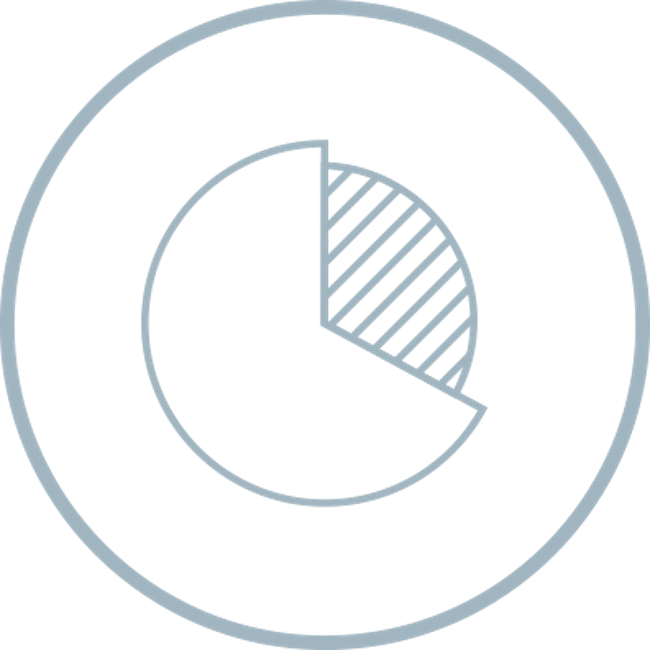
Support services | Wahine | Tamariki | Tāne/partner |
Justice | 62% | - | 53% |
Specialist mental health | 23% | 1% | 43% |
Addiction | 7% | - | 10% |
Medical | 24% | 2% | 30% |
Dental | 1% | - | - |
Benefit | 44% | - | 43% |
Employment | 7% | - | 20% |
Education | 5% | 2% | 3% |
Residential | 42% | - | 43% |
Kai | 51% | - | 90% |
Child Advocacy | 12% | 25% | 7% |
Disability | 1% | 1% | - |
Safety alarms/cameras | 19% | - | 3% |
The opportunity input seeks to reflect the proportion of participants who have the opportunity to achieve a particular outcome (at X effectiveness) as a result of engaging in Te Whakaruruhau.
- Te Whakaruruhau captured 23% or 678 households' individualised data in an anonymised spreadsheet that showed individual factors as well as what types of support each wahine, tamariki and tāne/partner received.
- There were base-level outcomes for all whānau for meangingfully engaging in the crisis services, this included: mental and physical health, the behavioural bundle (addiction, offending and risky behaviour), family violence, victimisation (family violence) and child placement.
- Additionally, there were whānau who accessed certain services that enabled us to attribute outcomes to these participants. For example:
- The increase employment outcome was included for wahine and tāne/partner who accessed employment support.
- The improve oral health outcome was included for wahine who accessed dental support.
Applying specific opportunity rates for certain sub-populations
Opportunity rates are also intended to discount for the percentage of the population who would be expected to achieve that outcome naturally, without support from an external intervention. Where possible from public data and programme data, we apply specific opportunity rates for subgroups of participants (based on their situational or demographic factors). Otherwise, we apply opportunity rates drawn from the general New Zealand population.
Example:
- For the improve oral health outcome, data on participants’ ethnicity allowed us to apply specific sub-population opportunity rates for participants who received dental care.
- For the increase academic achievement outcome, applied to tamariki, data on participants ethnicity allowed us to apply sub-population opportunity rates to reflect the difference in opportunity to complete NCEA L3 based on ethnicity.

Mental health
We assumed that all wahine referred into Te Whakaruruhau crisis services had poor mental health.
Therefore, 100% of wahine had poor mental health.
Addiction
32% of wahine, 37% of tamariki (rangatahi) & 37% of tāne had alcohol or drug abuse issues at referral.
We were able to use this data as opportunity for the reduce addiction outcome.
OT Involvement
18% of wahine and 26% of tāne/partner had involvement with Oranga Tamariki in their household.
We used the OT involvement sub-population for the reduce child placement outcome applied to households.
Offending
26% of tāne/partner and 10% of wahine had been charged with a criminal offence in the last 5 years.
We were able to use this data as opportunity for the reduce offending outcome.

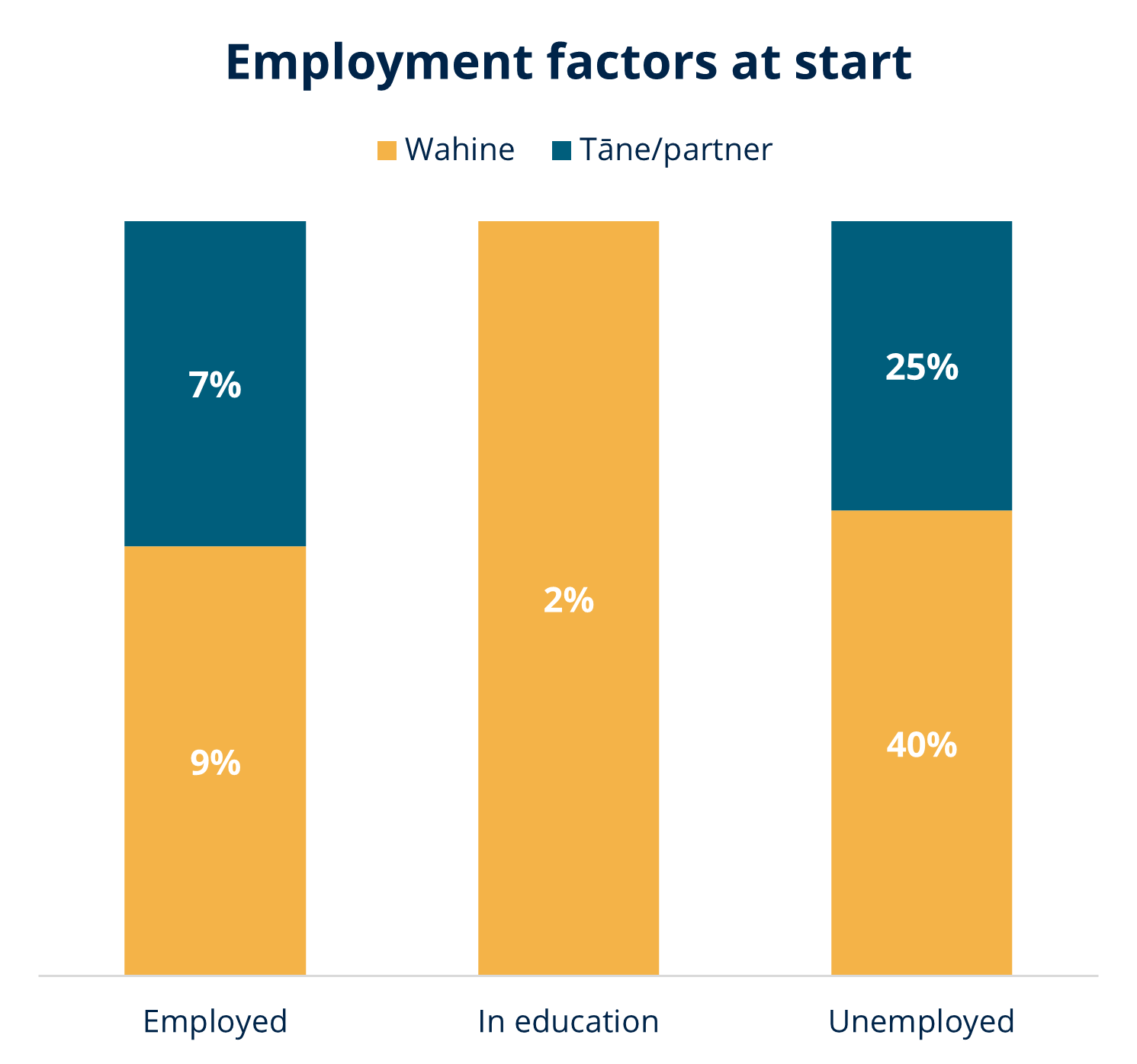
Unemployment
40% of wahine and 25% of tāne/partner were unemployed at programme start.
We used the unemployed sub-population for the increase employment outcome.
Costs
$ 2,857,475
Total investment
Total investment: The sum of the programme's direct and indirect costs.
$2,090,928
Direct costs
Direct costs: The expenses involved with running the programme.
$766,547
Indirect costs
Indirect costs: Expenses that don't come from directly running the programme but are still needed as part of it.
$481
Average cost per starting participant
Average cost per starting participant: The total investment divided by the number of starting participants.
Disclaimer: The above costs stated are for the period in scope, 1 November 2023 - 31 October 2024. These costs are assumed to be representative of the investment required to achieve programme outcomes.
The SROI metric is highly sensitive to cost, as total social value is divided against total programme costs.
The cost per starting participant is in the middle of the range for comparable programmes we have measured.
Direct costs: 83% of programme direct costs are attributable to staff wages.
Indirect costs: 59% of programme indirect costs are attributable to Admin wages (Accounting, Audit, Senior Management, Head Office support) and 25% to vehicle expenses.
Future opportunities
What might you do to enhance your view of the social value Te Whakaruruhau creates?
Consolidating case note data into an integrated system to reflect the situational factors and full range of supports provided to each participant.
- We understand current data is recorded in case notes. Consider adapting data collection into a system where it may be easier to track situational factors and types of support over time.
Collecting outcomes data
- Where participants are engaging in many services at Te Whakarurahau (internal or external), consider tracking outcomes data. This could happen at the exit/last interaction with the whānau. Visibility over engagement in your services and associated outcomes, would enable us to more accurately understand the effectiveness.
Optimising visibility of type of victimisation in the household
- Within an integrated data system of data collection, it will be important to have types of violence experienced by wahine, tāne and/or tamariki to better understand the level of trauma.
Next Steps
What you could do with your results
Share your GoodMeasure report with funders and supporters
- Funders will appreciate your commitment to impact measurement as it demonstrates transparency and a desire to do good, better. Invite input from both existing and prospective funders. They may have helpful insights and advice – or additional funding – to help you further increase impact.
Review your GoodMeasure report as a team
- Discuss key insights from the Report with your leadership, programme and finance team. How could you increase your impact even further?
Celebrate with your team
- Your team has put in a lot of hard work to achieve the social value metrics captured in your GoodMeasure Report, it’s important to pause every so often to reflect on the impact you’re achieving together.
How we utilise research
Research informs the Outcomes and Effectiveness components of our social value equation. We conduct a rapid literature review to:
- Identify what long-term outcomes your programme is having on participants (by substantiating the link between the activities of the programme and outcomes for participants).
- Estimate the effectiveness of your programme in achieving each outcome by checking how closely it follows proven methods for the participants in the programme.
- Understand the people you work with and your Theory of Change
- Using your Theory of Change, we build an Intervention Logic to substantiate quantifiable impacts
- Test your programme against domestic and international academic literature
Summary of Inputs and Assumptions
The inputs and assumptions used to calculate your SROI
Inputs to this SROI | Key Assumptions | |
Outcomes |
|
|
Effectiveness |
|
|
Population |
| |
Opportunity |
|
|
Cost |
|
Definitions
Intervention - An intentional process through which a defined group of people have the opportunity to create a positive change in their life trajectory.
Intervention type - A categorisation to group similar interventions based on their activities (i.e. how resources are used). These categories have been developed by ImpactLab based on academic literature and the input of organisations participating in the SROI process.
Organisation - The organisation delivering the programmes measured.
Programme - The unit of measurement of an SROI which consists of one or more interventions.
Participant - A person or group of people for whom a programme exists to make a positive difference.
Sector - The part of the charity or social sector within which the organisation primarily operates. This is an organisation-level categorisation.
Social value - The social impact in dollar terms that the amount invested achieves for participants over their lifetime. The social value is calculated by combining outcome values with a service delivery quality score, the size of the opportunity to support a population, and the number of people supported.
Key References
Bennett Cattaneo, Lauren and Lisa A. Goodman. “What is empowerment anyway? A model for domestic violence practice, research, and evaluation”, Psychology of Violence, 2015, 5(1): 84-94.
Carman, Mary Jean., et al. “Long-term recovery from intimate partner violence: definitions by Australian women”, Journal of Family Violence, 2023, 38: 747-760.
Dillon, Gina., et al. "Mental and physical health and intimate partner violence against women: A review of the literature", International Journal of Family Medicine, 2013, doi:http://dx.doi.org/10.1155/2013/313909
Eckhardt, Christopher L., et al. "The effectiveness of intervention programs for perpetrators and victims of intimate partner violence", Partner Abuse, 2013, 4(2): 196-231.
Flasch, P., et al. “Overcoming abuse: A phenomenological investigation of the journey to recovery from past intimate partner violence”, Journal of Interpersonal Violence, 2015, 32(22): 1-29.
Hackett, Shannon., et al. “The therapeutic efficacy of domestic violence victim interventions”, Trauma, Violence, & Abuse, 2016, 17(2): 123-32.
Hashemi, Laden., et al. “Exploring the health burden of cumulative and specific adverse childhood experiences in New Zealand: Results form a population-based study”, Child Abuse & Neglect, 2021, 122: 1-15.
Hing, Nerilee., et al. "Impacts of male intimate partner violence on women: A life course perspective", International Journal of Environmental Research on Public Health, 2021, 18(16): 8303.
Hodgkinson, William., et al. “Comparing panic alarm systems for high-risk domestic abuse victims: a randomised controlled trial on prevention and criminal justice system outcomes”, Journal of Experimental Criminology, 2023, 19: 595-613.
Huang, Chien-Chung., et al. “Children’s exposure to intimate partner violence and early delinquency”, Journal of Family Violence, 2015, 30: 953-965.
Levenson, Jill. “Trauma-informed social work practice”, Social Work, 2017, 62(2): 105-113.
Little, Gaylene., et al. “Themes for family violence intervention practice: Manaakitanga, whakawhanaungatanga, professional integrity, and authenticity”, Social Workers Registration Board Conference, 2013, pp. 47-55.
Mehr, Jacqueline B., et al. “Intimate partner violence, substance use, and health comorbidities among women: A narrative review”, Frontiers in Psychology, 2023, 13: 1-14.
Moylan, Carrie A., et al. “The effects of child abuse and exposure to domestic violence on adolescent internalizing and externalizing behaviour problems”, Journal of Family Violence, 2010, 25(1): 53-63.
Peterson, Kevin., et al. “Effects of second responder programs on repeat incidents of family abuse: An updated systematic review and meta-analysis”, Campbell Systematic Reviews, 2022, 18: 1-37.
Robbins, Rachel and Kate Cook. “‘Don’t even get us started on social workers’: Domestic violence, social work and trust – An anecdote from research”, British Journal of Social Work, 2018, 48: 1664-1681.
Warshaw, Carole., et al. A Systematic Review of Trauma-Focused Interventions for Domestic Violence Survivors, 2013, National Center on Domestic Violence, Trauma & Mental Health.
Limitations
- The themes analysed in this report are based on observed correlations and provide broad conclusions rather than tight causative claims.
- Programme intervention practices are determined via narrative and operational data provided by an organisation. It does not include direct observation of programmes, and as such social value forecasts do not capture variation in programme practice e.g., in workforce skills or programme fidelity across locations.
- Comparisons should be considered indicative only, as metrics can be influenced by a variety of factors, including differences in data quality, scoping decisions, improvements to methodology over time and limitations in the available academic literature.
- Many aspects of social impact cannot appropriately be quantified in dollar terms, and SROI findings should be considered alongside other important sources of information such as participant feedback and more bespoke forms of evaluation.
- GoodMeasure is a standardised measurement model — different interventions are treated as consistently as possible to enable comparability, which means the uniqueness of each intervention is not fully reflected.
- Cost and participant data inputs are provided by the organisation. Responsibility sits with each organisation to ensure their data is accurate and genuinely reflects the programme.
- Estimates have varying confidence levels due to differing quality and availability of data inputs. The GoodMeasure methodology takes the approach of using the data that is available in order to support ongoing data improvement.
- The lifetime (dollar) value of an outcome is conservatively valued over a 5-year period. This is aligned with New Zealand Treasury’s approach of measuring impact within a contained period.
Disclaimer
This disclaimer sets out important information about the scope of ImpactLab Limited’s services. ImpactLab endeavours to ensure that all material and information used for and presented in any GoodMeasure, including ROI calculations and impact numbers, is accurate and reliable (information). However, the information is based on various sources, including information organisations provide to ImpactLab which is not independently verified. ImpactLab does not make any representations or warranties in respect of information it uses or presents in relation to any GoodMeasure or this report. This includes any representation or warranty relating to the accuracy, adequacy, availability or completeness of information, or that it is suitable for its intended use. ImpactLab does not provide advice or make recommendations for any decisions made by any person, financial or otherwise, either in relation to any GoodMeasure, or this report. Data and percentages stated in this report may have been rounded.
Aggregated data stated in this report is based upon data provided to ImpactLab pursuant to its privacy policy and terms and conditions. Data ImpactLab uses except in exceptional circumstances must be aggregated and anonymised so that no participant in any programme ImpactLab analyses can be identified within data Impactlab uses or produces. Where ImpactLab uses the New Zealand Integrated Data Infrastructure (IDI), it does so subject to the conditions for access set by Stats NZ for IDI data users.
Attribution
Some data and information used in the Social ROI calculations is licensed under a Creative Commons Attribution 4.0 International (CC BY 4.0) Licence. It is attributed to the New Zealand Treasury.
ImpactLab - Do good, better.
ImpactLab’s vision is to help create a world where investment works for communities, so that people can live the lives they choose.
We work with the best available data and evidence to estimate social value in dollar terms – a metric that is measurable, consistent, and comparable.
We build close relationships with our customers to understand them, and the needs of their communities, supporting them to do good, better.
Contact:
04 391 2755
info@impactlab.co.nz
LinkedIn | Facebook
Level 1, 2-8 Chancery Street, Auckland, 1010
Level 8, 187 Featherston Street, Wellington 6011
© ImpactLab Ltd, 2024. All rights reserved